Go World Travel is reader-supported and may earn a commission from purchases made through the links in this article.
After splurging on cannoli during my trip to Sicily, I realized I needed to be selective about my activities for the remainder of my stay. Sicily is filled with charming towns, villages, and adventures, but one experience stood out for me above the rest.
Since childhood, I’ve been captivated by volcanoes and the fascinating phenomenon they represent. So, while in Catania, visiting Mt. Etna, the largest active volcano in Europe, was an obvious choice.
With a budget that wouldn’t allow for a €150+ guided tour, my friend and I had to devise a budget-friendly plan for exploring this impressive volcano. Despite extensive research, we found many guides lacking essential information.
After facing several hurdles, I decided to create my own guide on exploring Mt. Etna affordably, since it often seems like expensive tours are the only option.
How to Get to Mt. Etna
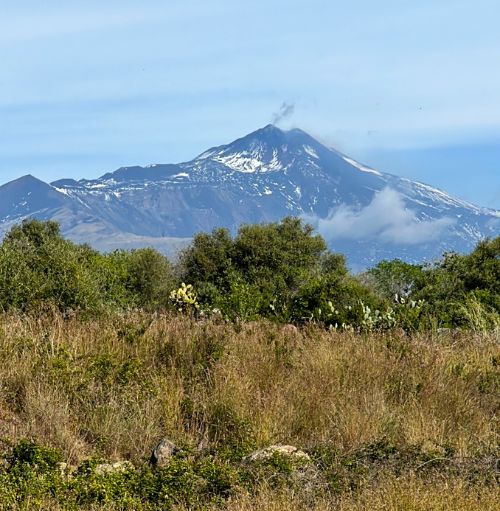
During our stay as Workawayers just outside Catania, my friend Julia and I volunteered at a hotel in exchange for meals and lodging. On our days off, we chose a few towns to explore, saving Mt. Etna for our penultimate day.
However, like on many of our day-offs, the weather didn’t cooperate. Our hosts advised against attempting to go up the mountain during a blizzard (in late April), which made sense. Thankfully, we still had one last day left to explore, and the forecast was much more promising.
We set our alarms for 5:45 a.m., caught a 6:30 a.m. bus from Aci Trezza, and arrived in Catania in time to catch the bus to Mt. Etna—the only bus available.
Intriguingly, there was just one bus service each day to the volcano, departing at 8:15 a.m. Missing this bus meant shelling out a fortune for a taxi ride. The same applied to the return trip; the only bus back to Catania left at 4:30 p.m. Each journey took about an hour and a half.
I had purchased our bus tickets online in advance, and my friend and I arrived thirty minutes prior to departure. However, when it was time to board, we were denied access. Confused, I explained that we had already bought tickets. The bus driver shrugged and informed me that it was already full. My frustration mounted as I realized this was our last chance to visit and we couldn’t afford a taxi.
“Is there no second bus?” I asked in desperation.
“No, you can go tomorrow,” he said casually.
At this point, I was muttering under my breath, trying to maintain my composure.
Lesson Learned
Arrive at the bus station EVEN EARLIER (45 minutes to an hour) and don’t buy tickets until you are certain of your spot on the bus. You can purchase them directly on the bus, which simplifies the process compared to dealing with online ticketing. The fare is €6.60 each way. The bus departs from Piazza Papa Giovanni XXIII, located near Catania Centrale train station. With various buses available and unclear signage, arriving early is essential. We ended up asking locals where the Etna bus departs. Also, consider scheduling a few extra days in case of bad weather or if you miss the bus.
Read More: Behind the Scenes of Workaway: Lessons Learned Volunteering on an Italian Farm
A Fortunate Solution
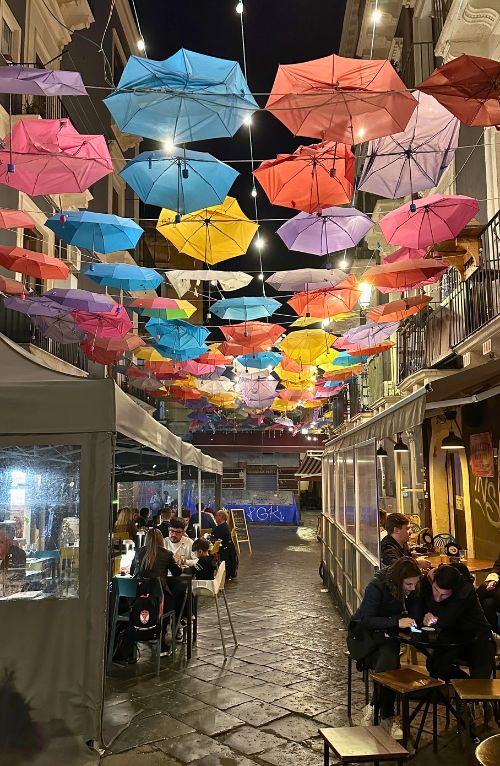
Outside the bus, we found a group of other travelers dealing with the same issue. However, they were clever enough not to purchase tickets in advance. My past experiences taught me the hard way about buying bus tickets too early and too late, making public transportation in Sicily one of the least intuitive systems I’ve encountered.
Nearby, several taxi drivers were waiting, eager to take advantage of those who missed the bus. They threw out prices while I dismissed them, looking for alternatives. I eventually rallied some fellow stranded travelers and managed to negotiate a shared taxi ride with a French couple.
The taxi driver refused this offer and instead proposed a rate of €30 each for a roundtrip. Considering other sources claimed a taxi ride could easily cost around €200, this was an incredibly reasonable offer! Fortunately, Julia’s excellent negotiating skills helped us lower the fare to €25 per person.
We exchanged contact info with the French couple, who were on an expensive tour, agreeing to catch up later to share insights about their experience.
No Functioning ATMs
When we finally arrived, we learned that our taxi driver only accepted cash (some do, others don’t). We quickly realized we didn’t have enough cash on hand since we had already spent it on bus tickets. The driver pointed us to an ATM, but, predictably, it was out of order. Surely there had to be more ATMs? Unfortunately, that was the only one at the volcano, and many shops only accepted cash.
We approached various businesses begging for cash back on our cards, but that wasn’t an option. Our last resort was asking the driver if we could pay him partially and settle the rest later. Graciously, he agreed to take €30 for now and let us pay the remaining amount once we found an ATM back in Catania. Most people we met in Sicily were incredibly kind and understanding.
Lesson Learned
Always bring cash with you, just in case. We thought €30 would be sufficient but ended up needing more for the taxi. While some restaurants and shops accept cards, many rely solely on cash, so it’s best to be prepared.
Options for Exploring Mt. Etna
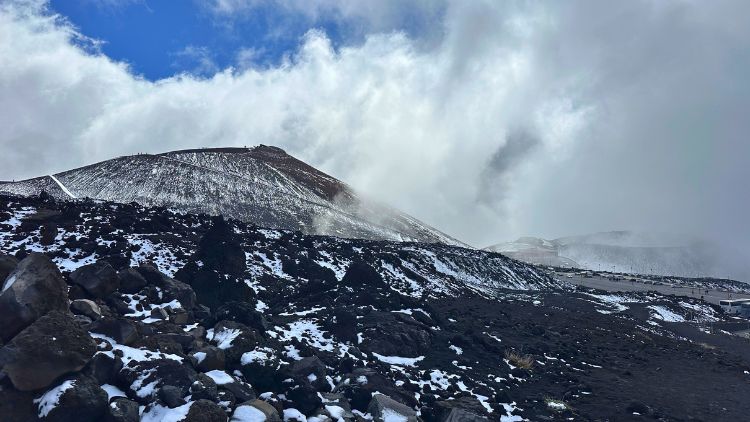
During our research, we discovered several options for exploring Mt. Etna:
1. Buy a Tour
Pros:
- Tour packages often include hotel pickup, taking the stress out of transportation.
- Most tours cover the cost of the cable car or other transport options to the summit.
- A guide is required to reach the summit, offering a chance to see authentic lava flows and enriching the experience.
- There’s a variety of choices based on your interests.
Cons:
- Tour options tend to be quite expensive.
- You have minimal freedom to explore independently.
- Group sizes can be large, so check the details before booking.
- Trips can be canceled if volcanic activity is deemed too risky.
Best Tour Options
2. Cable Car Self-Guided Tour
Pros:
- It provides a quicker and easier ascent to the volcano.
- Allows for independent exploration and hiking at the top.
- Once you reach the cable car station, you can spend more time enjoying the more interesting hikes at the summit.
- The views from the cable car are stunning.
Cons:
- The roundtrip ticket for the cable car can be costly. Details are provided below.
- Taking the cable car does not lead you to the summit; you would need to book a separate tour for that.
Cable Car Ticket Options
- Option 1: Reach 2,500 meters for €50 for adults and €30 for children.
- Option 2: Go up to 2,900 meters for €78 for adults and €50 for children. This includes the cable car, a 4×4 vehicle, and a 60-minute guided walk.
*Tickets cannot be purchased online, but more information regarding options and pre-booking requests can be found here.
3. Self-Guided Hike Without Cable Car
Pros:
- This option is free (aside from getting there).
- The sense of accomplishment is rewarding; it feels like you’ve earned the view.
- You get to enjoy breathtaking sights while hiking.
Cons:
- This option is limited—you won’t reach the summit.
- This hike is very challenging.
- It can be quite time-consuming.
Our Choice: Self-Guided Tour Without Cable Car
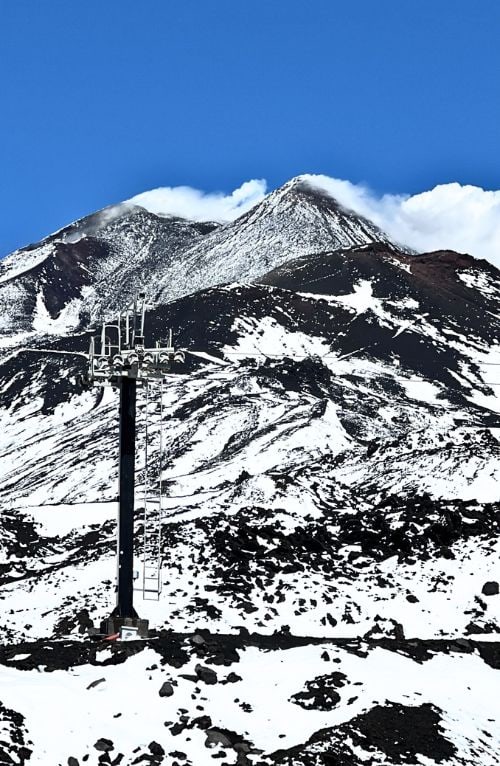
After unexpectedly spending four times our budget on transportation, we were left with no choice but to opt for the free hiking option. However, the challenge was that there were no signs indicating the trail’s start point.
We wandered around aimlessly and asked locals for directions, finally discovering that the path follows the cable car route upward. Standing at the bottom, we doubted the steep, poorly defined trail was the actual route. Was this merely the initial section?
It turned out that the steepness persisted all the way up. This hike ranked among the most challenging I’ve undertaken. Nevertheless, my friend and I made frequent stops to relish the breathtaking views, and it was entirely worth it. We hiked through remnants of snow from the day before, feeling exhilarated despite the chill. Once we got moving, we shed some layers. At times, we found ourselves hiking amidst the clouds, which was an incredible experience, while other moments offered us sunshine. After a couple of hours of trekking (with numerous breaks), we finally reached the top of the cable car.
The views were absolutely stunning, with a clear sight of the summit, where smoke ascended actively. Watching it was entrancing. We enjoyed a meal at the café at the top, complete with cannoli for dessert (because, of course).
We aimed to hike further to see some craters but realized we were pressed for time. We had arranged with the taxi driver to pick us up at 3 p.m.
*This hike is not ideal for beginners. While Julia and I aren’t frequent hikers, we were raised in the Colorado mountains and still found it quite demanding. If you’re not in good physical shape, consider alternative options such as jeep tours and shuttles.
The Descent
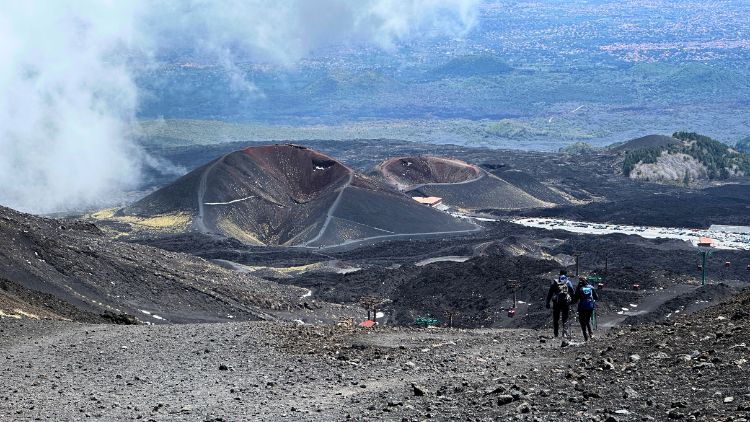
The hike down was significantly easier, but we faced unexpected challenges. The incline and loose lava rock gravel meant we were slipping and sliding the entire way. Our joints started aching as we navigated the descent. It was enjoyable at times, though. Even with minimal breaks, it surprisingly took us around two hours to return, which was unexpected.
Though we were disappointed not to have done the crater hike at the top, the descent allowed us to view some fascinating craters. We even spotted trails leading around them, indicating it’s possible to explore those areas as well.
Plan for 3-4 hours for both uphill and downhill hikes. Wearing appropriate shoes (like sturdy hiking boots) would have been beneficial.
Lesson Learned
Make sure to bring suitable clothing and footwear, and prepare for the weather conditions, timing, and the physical demands of the hike.
What to Wear and Bring on Your Mt. Etna Hike
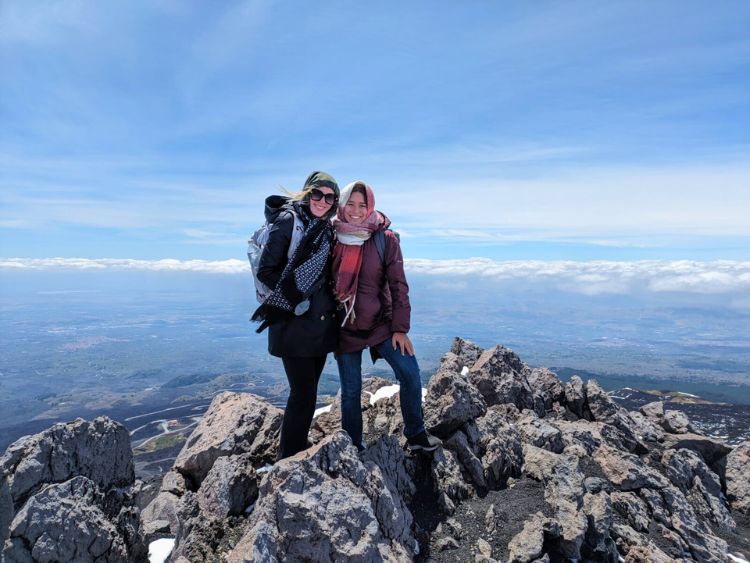
Mt. Etna’s conditions vary depending on the season you visit, but layering is essential. It can get quite cold even in summer, especially since the altitude at the summit is nearly 11,000 feet (3,329 meters). When we visited in late April, snow still lingered. I had packed for a three-month “spring” trip, leaving me inadequately equipped for the chill.
In lieu of proper gear, I layered as best as I could, using a scarf for warmth and subpar gloves that didn’t do much against the cold. Ideally, hiking boots are recommended, but all I had were sneakers. If you want to be better prepared than I was, consider bringing:
- A warm, waterproof jacket
- Fleece layers
- A light shirt for warmth
- Breathable, warm hiking pants
- Hiking boots
- Warm socks
- A hat
- Gloves
- A scarf
- Sunglasses
Other essential items include:
- Snacks
- Sunscreen
- Plenty of water
- A packed lunch if you prefer not to buy food at the cafés (the prices can be steep, though the café at the top was better than anticipated)
- A backpack
For those caught unprepared, jacket rentals are available on-site.
Accomplishing such a demanding hike filled me with pride, especially after navigating to the rewarding viewpoint. While it was challenging, it was also the most economical option to experience Etna. If you’re on a budget in Sicily, don’t let that deter you from visiting Mt. Etna. Just arrive at the bus station early, have cash at the ready, and dress in layers!
If You Go:
Read More:





